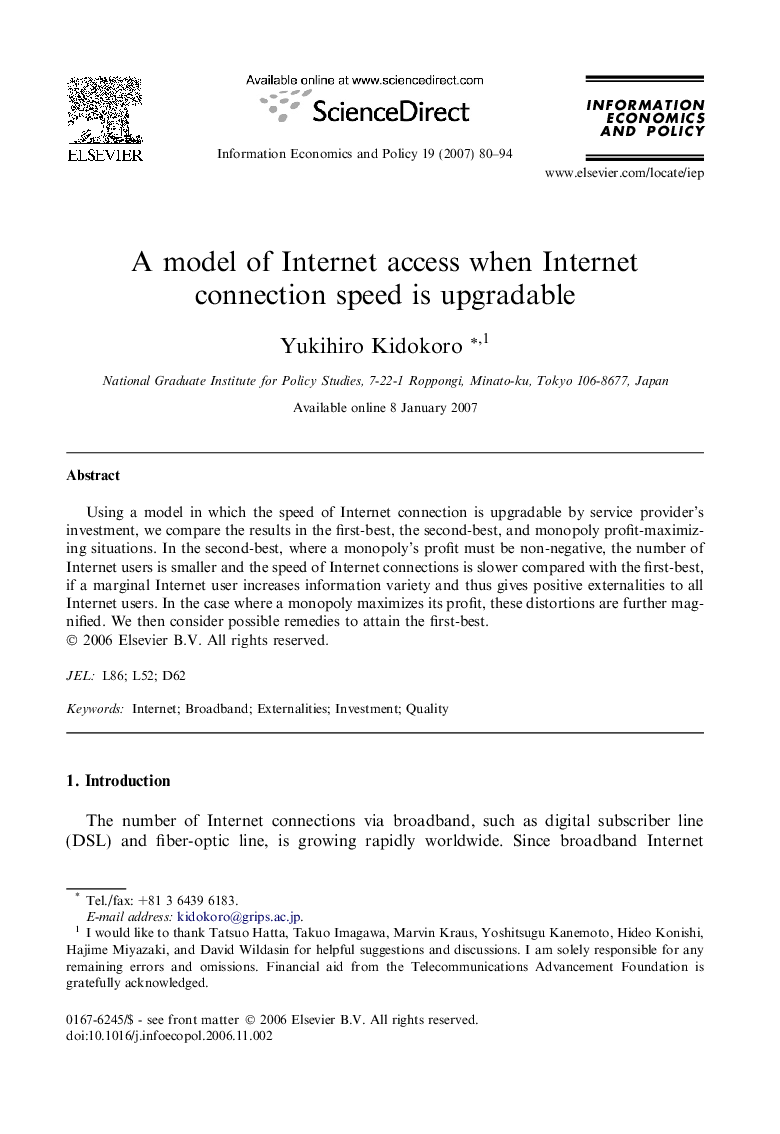| Article ID | Journal | Published Year | Pages | File Type |
|---|---|---|---|---|
| 5076075 | Information Economics and Policy | 2007 | 15 Pages |
Abstract
Using a model in which the speed of Internet connection is upgradable by service provider's investment, we compare the results in the first-best, the second-best, and monopoly profit-maximizing situations. In the second-best, where a monopoly's profit must be non-negative, the number of Internet users is smaller and the speed of Internet connections is slower compared with the first-best, if a marginal Internet user increases information variety and thus gives positive externalities to all Internet users. In the case where a monopoly maximizes its profit, these distortions are further magnified. We then consider possible remedies to attain the first-best.
Related Topics
Social Sciences and Humanities
Business, Management and Accounting
Management of Technology and Innovation
Authors
Yukihiro Kidokoro,
